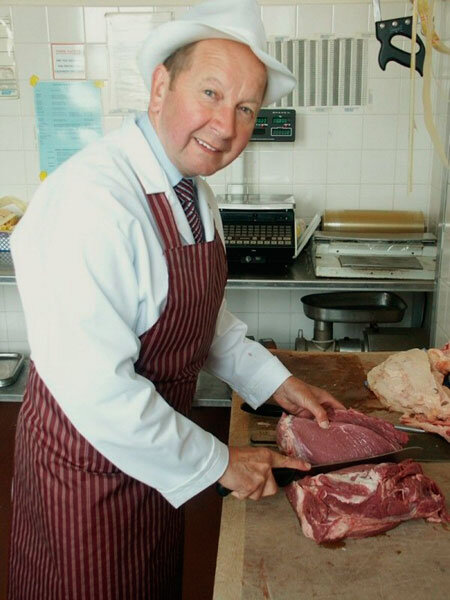Extensive Employee ControlIn 1987, the 535 employees of Chase Brass, the sheet metal division of BP America, Inc., were about to lose their jobs to a plant closing. The division made copper and brass sheets used largely for auto and electrical manufacturing. BP America indicated an openness to a deal with division employees, and on Jan. 29, 1988, the workers began to experience life as owners of the newly renamed North Coast Brass & Copper Co.Labor unions representing workers in the plant  have four seats on the nine-member board of directors, management has two seats, and labor and management jointly select three outsiders to the board. At the time, Attorney Deborah Groban Olson, who assisted the employees with the buyout, indicated that North Coast probably had more immediate employee and union control in its governance structure than any other employee buyout of its size.The purchase price for North Coast was significantly lower than the liquidation value. The workers financed the deal with $30 million from AmeriTrust - $22 million in revolving credit and an $8 million employee stock option term loan. After about 5 years, the company was purchased by foreign owners from the employees.
have four seats on the nine-member board of directors, management has two seats, and labor and management jointly select three outsiders to the board. At the time, Attorney Deborah Groban Olson, who assisted the employees with the buyout, indicated that North Coast probably had more immediate employee and union control in its governance structure than any other employee buyout of its size.The purchase price for North Coast was significantly lower than the liquidation value. The workers financed the deal with $30 million from AmeriTrust - $22 million in revolving credit and an $8 million employee stock option term loan. After about 5 years, the company was purchased by foreign owners from the employees.
United Food and Commercial Workers (UFCW)
2011 this 100% employee- owned chain of 76 grocery stores, with over 15,000 employees, has already expanded to 80 unionized stores.
In 2011 Homeland Acquisition Corp. (HAC), a grocery store chain in  Oklahoma and Texas, and United Food and Commercial Workers (UFCW)Local 1000, partnered to transition the company to 100% employee ownership using an Employee Stock Ownership Plan (ESOP). As part of the transition, HAC and UFCW negotiated a new contract and the terms of the ESOP, as well as a number of corporate governance provisions for the new company. When the deal closed at the end of 2011 there were 76 stores. Now there are 80 stores, all of them union.
Oklahoma and Texas, and United Food and Commercial Workers (UFCW)Local 1000, partnered to transition the company to 100% employee ownership using an Employee Stock Ownership Plan (ESOP). As part of the transition, HAC and UFCW negotiated a new contract and the terms of the ESOP, as well as a number of corporate governance provisions for the new company. When the deal closed at the end of 2011 there were 76 stores. Now there are 80 stores, all of them union.
Aided in negotiations by several financial and legal advisors, including Attorney Deborah Groban Olson, UFCW and HAC agreed on:
- A new defined benefit plan
- ESOP participation for union members
- A significant role for the union on the board of directors
- A representation agreement covering new stores opened by the company.
According to UFCW Local 1000 President Ricky Burris:
“UFCW members are excited to own a majority of HAC stock and are eager to work with management to achieve continued success for the company. We take seriously the responsibilities that come with ownership, representation on the board of directors, and a voice in major corporate decisions.”
For another example of Deborah Olson's ESOP work with the UFCW see the Rosauers case study.
Paper Mill
 Paper mills proved to be too capital intensive to enable successful employee buyouts. However, in a number of cases, the active participation of the union in the purchase process, enabled the union to have some influence on getting a more favorable company as the successful buyer, and thus getting better union contracts than they would have from other buyers.
Paper mills proved to be too capital intensive to enable successful employee buyouts. However, in a number of cases, the active participation of the union in the purchase process, enabled the union to have some influence on getting a more favorable company as the successful buyer, and thus getting better union contracts than they would have from other buyers.Homeland Grocery
UFCW negotiated an ESOP with a significant union role in corporate governance and representation agreement for new stores. Since 2011 this 100% employee-owned chain of 76 grocery stores, employing over 15,000 people, has already expanded to 80 unionized stores.
In 2011 Homeland Acquisition Corp. (HAC),  a grocery store chain in Oklahoma and Texas, and United Food and Commercial Workers (UFCW) Local 1000, partnered to transition the company to 100% employee ownership using an Employee Stock Ownership Plan (ESOP). As part of the transition, HAC and UFCW negotiated a new contract and the terms of the ESOP, as well as a number of corporate governance provisions for the new company. When the deal closed at the end of 2011 there were 76 stores. Now there are 80 stores, all of them union.
a grocery store chain in Oklahoma and Texas, and United Food and Commercial Workers (UFCW) Local 1000, partnered to transition the company to 100% employee ownership using an Employee Stock Ownership Plan (ESOP). As part of the transition, HAC and UFCW negotiated a new contract and the terms of the ESOP, as well as a number of corporate governance provisions for the new company. When the deal closed at the end of 2011 there were 76 stores. Now there are 80 stores, all of them union.
Aided in negotiations by several financial and legal advisors, including Attorney Deborah Groban Olson, UFCW and HAC agreed on:
- A new defined benefit plan;
- ESOP participation for union members;
- A significant role for the union on the board of directors;
- A representation agreement covering new stores opened by the company.
According to UFCW Local 1000 President Ricky Burris:
“UFCW members are excited to own a majority of HAC stock and are eager to work with management to achieve continued success for the company. We take seriously the responsibilities that come with ownership, representation on the board of directors, and a voice in major corporate decisions.”
Creative Community Pathways (CCP)
Creative Community Pathways (CCP), has created co-ops among the families of the children for whom it provides “individualized success plans. Families work together to get children to and from school and the many supportive resources in their program. The co-ops are organized and supported by CCP staff. Phyllis Williams, CEO of CCP developed these co-ops with advice from Atty. Olson. (More details coming soon.)
High Five Co-op Brewery
“For thousands of years people have met with  not much else between them besides a beer. And for just as long, beer has been a beverage of the people—a true democratic beverage. What more appropriate than to unite beer with the Co-operative model? With the shifting attitudes toward beer in United States, as well as the world, it only makes sense to work among the principles of a Co-op. High Five Co-op Brewery is not the first to make this step, and we will hopefully not be the last. While we are in formative stages, the future is exciting, and we invite you to join us, for there is work to do, beer to drink, and dreams to shape. We are proud to announce that as of today, the State of Michigan approved our Articles Of Incorporation and High Five Co-op Brewery, Inc. is now a Co-op. You can view our Articles Of Incorporation here. Our Bylaws have also been finalized, and we will be releasing them online shortly. This is fantastic progress and we can’t wait to announce more coming very soon.” -Quote from High Five Co-op Brewery Website.
not much else between them besides a beer. And for just as long, beer has been a beverage of the people—a true democratic beverage. What more appropriate than to unite beer with the Co-operative model? With the shifting attitudes toward beer in United States, as well as the world, it only makes sense to work among the principles of a Co-op. High Five Co-op Brewery is not the first to make this step, and we will hopefully not be the last. While we are in formative stages, the future is exciting, and we invite you to join us, for there is work to do, beer to drink, and dreams to shape. We are proud to announce that as of today, the State of Michigan approved our Articles Of Incorporation and High Five Co-op Brewery, Inc. is now a Co-op. You can view our Articles Of Incorporation here. Our Bylaws have also been finalized, and we will be releasing them online shortly. This is fantastic progress and we can’t wait to announce more coming very soon.” -Quote from High Five Co-op Brewery Website.
Mustard Tree Co-op
Mustard Tree Co-op is a 23 unit non-profit housing cooperative in Detroit’s Island View neighborhood, originally founded by Church of the Messiah. Attorney Olson helped them obtain their independent IRS 501(c)(3) status in the 1980’s and has represented them ever since.Church of the Messiah is an Episcopal church on Detroit's east side, an economically challenged area. When the neighborhood began to deteriorate in the late 1970's Pastor Ron Spann and parish members looked for ways to improve it. The apartment building at 215 E. Grand Blvd., immediately across the street from the church, was a source of neighborhood problems, including drugs and prostitution. In 1977, Richard Cannon became president of the Church of the Messiah Housing Corporation, through which the church bought the 23-unit building, andbegan renting to neighborhood people. It was always the desire of the Housing Corporation that the building be a co-op.In 1990 the building residents created the Mustard Tree Co-op and entered into a long-term mortgage to buy the building from the Housing Corporation for $650 per month.In 1997, the Housing Corporation wanted to sell the building outright to the residents’ co-op. It was then that the residents contacted Attorney Deborah Olson. Over the years, the co-op had retained 5% of the rent in a long-term capital improvement fund, which, by the time of the purchase had the $50,000 needed to purchase the building from the Housing Corporation.The co-op needed to formalize its existence and wanted to seek tax-exempt status. Atty. Olson successfully filed with the IRS for 501(c)3 tax-exempt status for Mustard Tree Co-op. She assisted the co-op in purchasing the building from the Housing Corporation. As a tax-exempt, non-profit the co-op is eligible for certain federal housing programs. However, the members do not build individual equity in the co-op.Since 1997, Atty. Olson has served as general counsel to the Co-op, dealing with a wide variety of issues.Sheree Walton, long-time president of Mustard Tree Co-op says, “The residents were overjoyed when we became owners of Mustard Tree through the co-op. We had many challenges and believed that co-op ownership was vital to preserving our community. We were looking for an attorney who had experience and was concerned about us. Atty. Deborah Olson has always been responsive, dedicated, thorough and cared about the needs of our members. She involved us as clients in every step of our legal work and we learned a great deal. She helped us do things the right way. She has represented us or almost 20 years and we would strongly recommend her to others.”
Southwest Detroit Construction Cooperative (SWDCC): Full Case Study
Southwest Detroit Construction Cooperative (SWDCC), Painting and Plastering and Janitorial Cooperatives – to be sustainable most (but especially inner-city) worker co-ops need a supporting joint business resource or community support organization. That is why the Mondragon, Emilia Romagna, Evergreen Cooperatives in Cleveland, WAGES and the Arizmendi Co-ops in Berkley have all created mutual support organizations for back office and business development functions. SWDCC’s story explains why that is.In 1985, Ed Bobinchak, then executive director of WARM Training, created Southwest Detroit Construction Co-op (SWDCC) to create a worker co-op as an employment mechanism for neighborhood residents who were trainees of WARM. People who took the training would join the co-op and begin paying their membership share through payroll deduction. The early organizing group agreed on a $1,000 membership. Members felt it was reasonable.WARM as a non-profit had a lot of relationships with non-profit housing groups as a market for co-op. Ed became a licensed builder so they could bid on contracts. Ed did the outreach and bidding on most of the contracts. Co-Founder of WARM, Michael Laughlin, a college grad, teacher who had done home repair work also became a licensed builder and served primarily as the initial crew leader for the co-op. He subsidized the co-op with his own labor. WARM subsidized it with Ed’s work and the back office accounting and reporting on taxes, filings on the state, putting together the monthly financial statements for the members. WARM raised some grant dollars for training and workshops in management and business training for members.During the first year of the weatherization contracts, Atty. Deb Olson structured a Mondragon style co-op structure. Ed and Mike sought the co-op structure because they were doing most of the work. The trainees would show up irregularly when it was part-time employment. WARM wanted the workers as co-op members to enable them to help the workers learn bidding and take on more responsibility.The co-op worked up to about $50,000 in year one gross revenue and $300,000 gross in year two. Work in the 1st year was weatherization contracts funded by the utility companies for around $50,000 total. Second year WARM bought a building on Michigan Ave. The City of Detroit provided facade improvement federal block grant (Neighborhood Opportunity Fund) funds to renovate the building. In year 2 the revenue of $300,000 was for the WARM facade renovation and similar facade work for local non-profit Michigan Avenue Community Organization (MACO). The co-op bid and won contracts on other facade renovation for MACO members.Although the original co-op idea was around weatherization, the members did not want to stay with weatherization, which is a dirty, messy job, crawling around in cellulose powder. The more skilled members wanted to get into more skilled and interesting work. WARM recruited several people who had more construction experience. There were now 3 different crew leaders. SWDCC began bidding on contracts through non-profits MACO, Church of Messiah Housing Corp. and other non-profit housing groups were getting city contracts to do home repairs. Co-op bid on and got many of those contracts. Ed and Mike were doing most of the bidding. There were a couple co-op members who, within their expertise, did the costing and bidding on those contracts.At the end of 2nd year there were 5 or 6 full time employee owners, and 6 trainees who came into contracts as needed. They were not invited to become members until they proved their reliability and skills. A number were invited into membership. Some early members left and joined the carpenters union as apprentices. Another went back to school. The overall level of proficiency didn’t grow. SWDCC started bidding on kitchen and bathroom rehab that had higher profit margin and required more skill. There were fewer new trainees joining the co-op. The number of skilled and semi-skilled trainees decreased. SWDCC wanted the people with greater skills to have dependable full-time employment. WARM continued to bring in trainees.By the end of the 3rd year the co-op was not making enough money to employ people full time. SWDCC needed the more skilled work to support co-op, but the members’ skill was not growing. The members went through a planning process to figure out what to do about it. They felt they needed to offer membership to more experienced and skilled workers and couldn’t continue to have 6 full-time members. WARM and SWDCC didn’t want to treat people as contract workers we would pull in when there were jobs. SWDCC did not have contracts enough to pay full-time wages and benefits for 6 members. The non-profit housing groups were SWDCC’s primary source of income and they were less dependable. There were a lot of roofing contracts. SWDCC bid in the spring and often didn’t get the work until November and were roofing in the snow. The work would bunch up in a few months of the year. With lulls in the winter.WARM Training funding and the co-op profitability was not enough to keep employing all the members. A lot of the trainees who became members were basically looking for a job and accepted ownership as a necessary requirement. They were not joining as entrepreneurs. Without that entrepreneurial sense we could not get people to seek contracts or get work done quickly and effectively. There were a lot of callbacks and need for repairs that ate into the company’s profit. Ultimately, the bills put the company out of business. We had too many debts and not enough income. The company downsized from 6 members to 3 members who had more skill. They kept it going at a much reduced level. The members decided to do other things. Jim Sweeney started teaching at a vocational technology school. Michael went back to teaching. Several guys kept the insulation machine and continued doing insulation contracts. Jerry Jackson continued to do insulation jobs on his own. Former co-op members bid for jobs on their own, not as a co-op. No one got back their co-op share, but we distributed tools in lieu of co-op share. The insulation machine was in one person’s garage and when they got contracts the individuals could use it. The company did not go bankrupt legally, but the assets were distributed as fairly as possible.WARM set up a painting and plastering co-op and a janitorial co-op both had similar fates. WARM provided the back office for these 2 co-ops. They never got the contracts consistency needed to have more than one or 2 members. When one lost interest they tended to fall apart. The janitorial co-op ran into hard times not having consistent contracts. There were accusations of theft from a well-placed customer, although we think there was not really theft. The janitorial co-op did not survive that.Ed and another employee were doing the back-office for the co-ops throughout.Dave Horning who worked w/ ch of mess did Painting and plastering and wanted to organize the painting and plastering. He did the costing and bidding. Pastor Ron Spann worked in the co-op and later wanted to become pastor. Horning late went to seminary and became a pastor too. The other 2 members never did any of the costing, bidding or creation of a business plan.Recommendations from Ed Bobinchak: Look for people with entrepreneurial drive and experience who appreciate the need for efficiency and keeping within budget. It doesn’t come naturally and it is hard to create it.There never was a business plan before we started and what we came up with turned out not to be the right market. Neither Ed nor Mike had previous experience running a company. Dave had never had full time employees before. We never thought it would make sense to hire the members as contractors. That seemed to go against the idea of creating decent full-time employment to support a family.Ed realized he was not the right person to move the company forward. WARM hired Karen Brown, who had managed Cass corridor Food co-op to work with the co-op in the last year, as they needed someone with more experience. Working for the non-profit was a real benefit and a limitation. WARM and SWDCC chose contracts with non-profits because it was easy to get the contracts, but it was limiting due to timing of payments and timing of the contracts themselves. There should have been a lot more market research done before starting a company.



